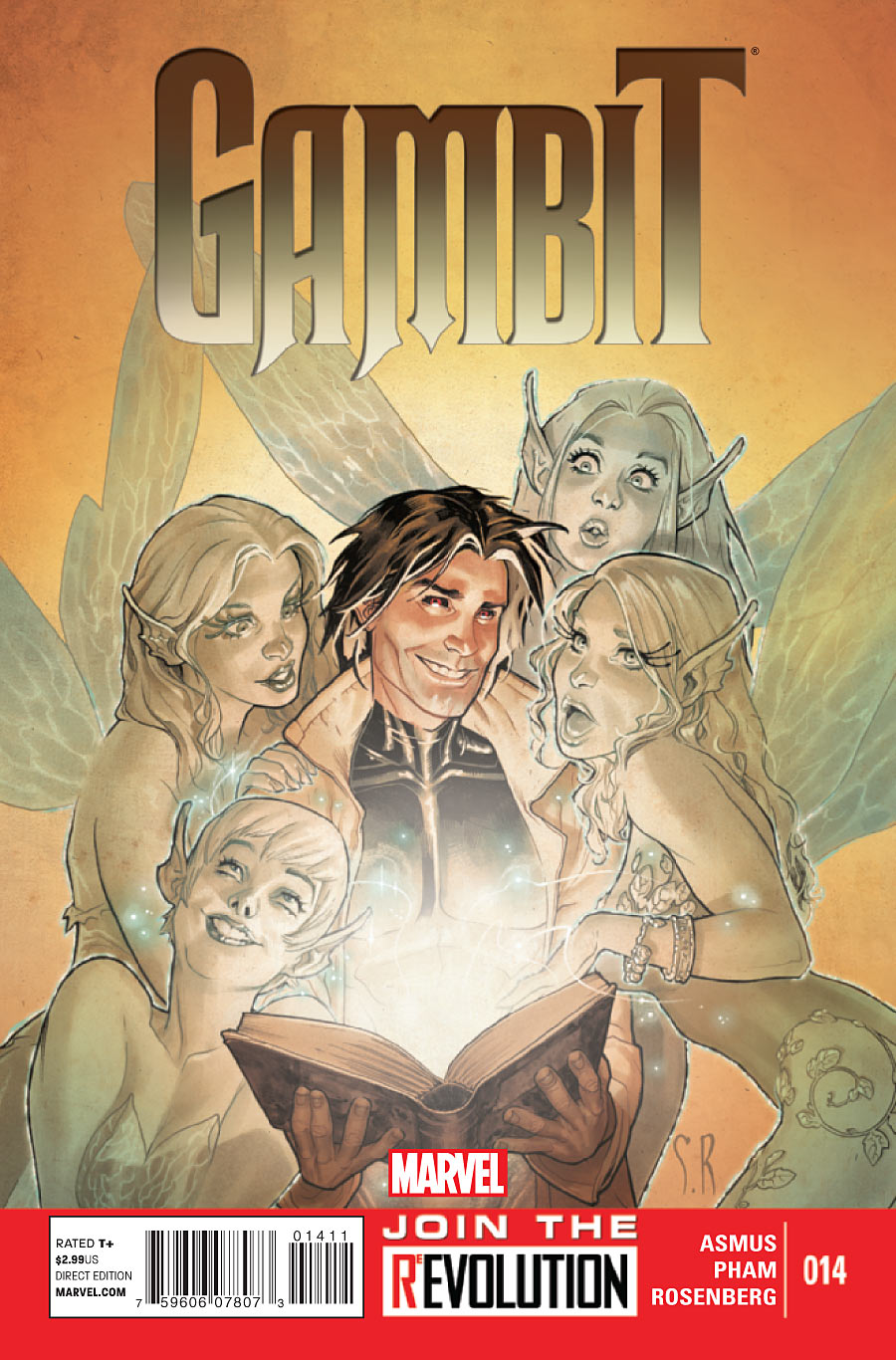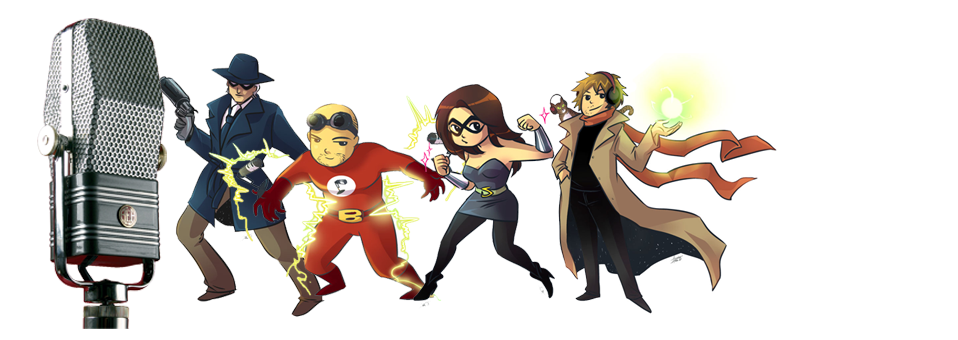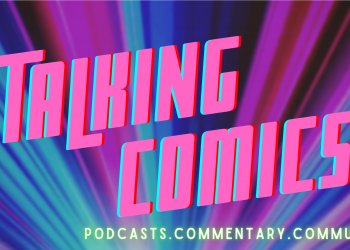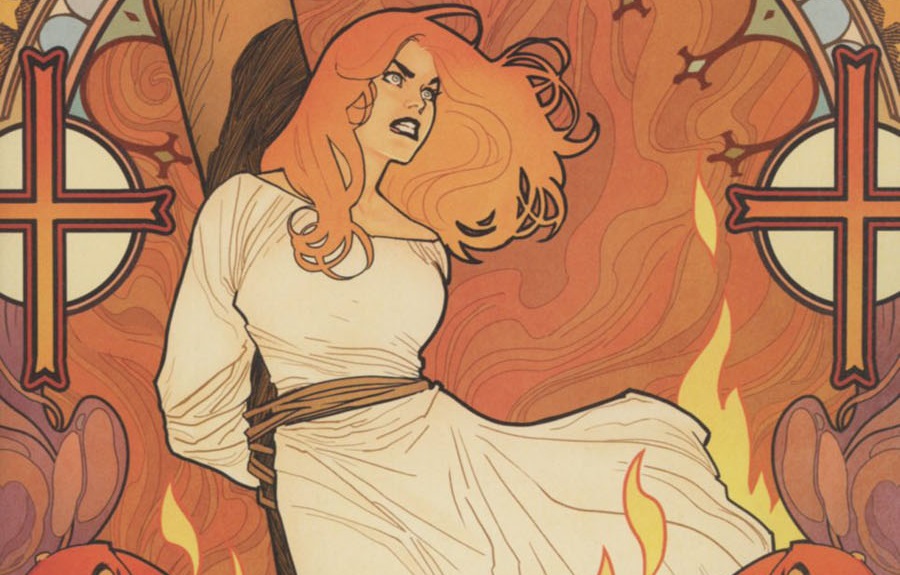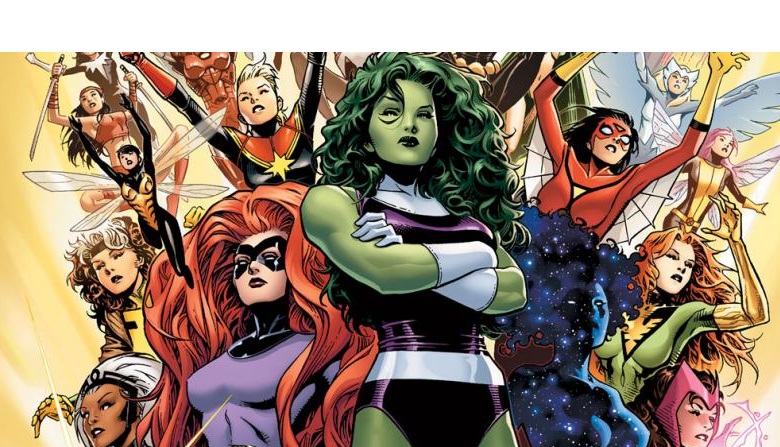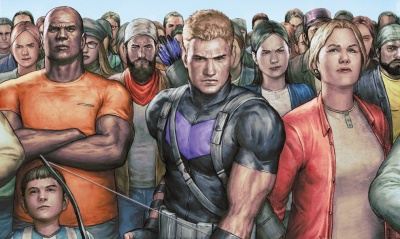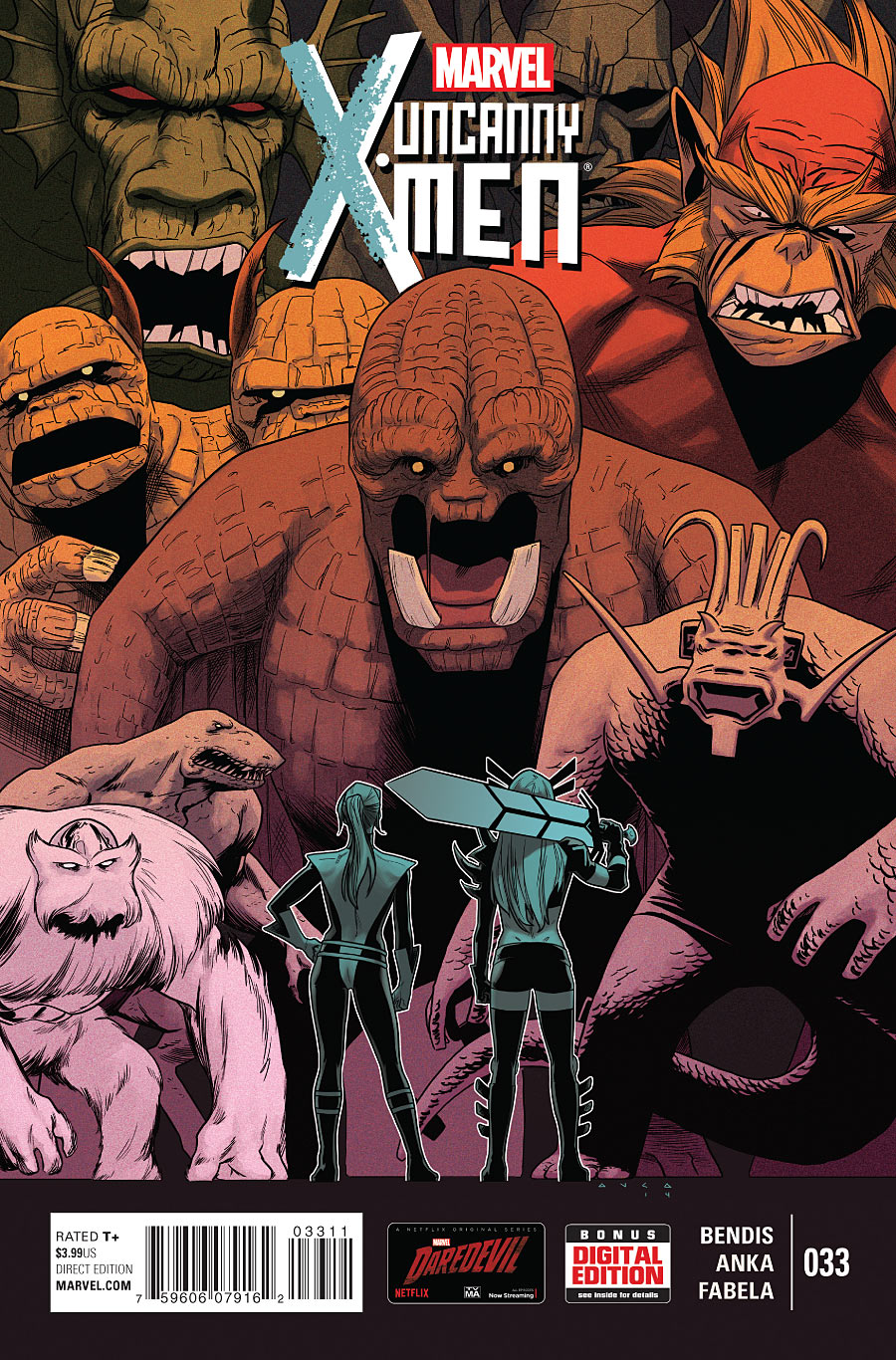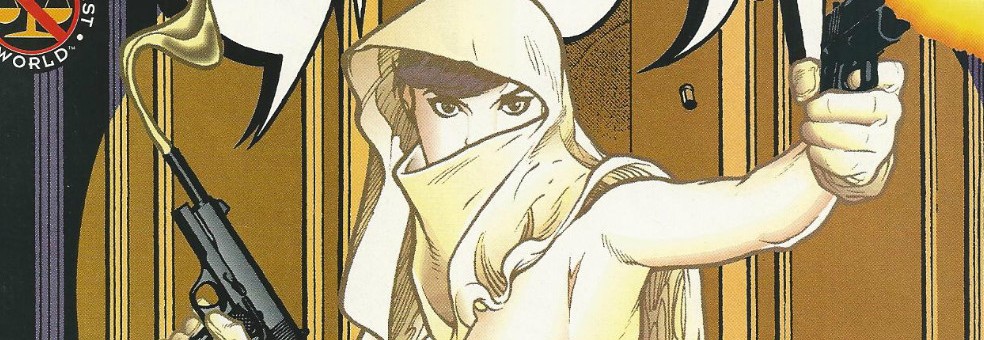I was not a Warren Ellis fan. I had no idea really who Bryan Hitch was but I fell in love with his pencils. I knew Paul Neary but I thought he only inked Alan Davis. I had read Image and Wildstorm in particular but knew them more for pretty art, pin-up worthy heroes, and for being late, very, very late. I’d been reading comics since 1979, before I could actually read and just liked the pictures. I used to cut out the heroes to play with. I feel sick to my stomach sometimes knowing the carnage of books I left behind until I could actually read the stories and not just look at them. But by 1999 heroes were stale. I’d left high school and in college I was on the cusp of getting out of comics, as I couldn’t stomach another Force Works or a Fantastic Force. Whose back was going to be broken, who was going to die for a year and then come back. Young Tony Stark is in the armor because old Tony Stark was a traitor? Matching Avengers leather jackets? Another x-verse crossover or clone saga was going to be the end of my collecting.
I was in college. There were girls, booze, parties, and of course classes. My LCS was still a weekly stop but my pull list was small, so small. At one point I was reading thirty to forty books a month. By 1998 I was under ten. The thought had crossed my mind to end it. But other then my family it was the longest relationship I’d ever had. And like any bad relationship I wasn’t sure if I should get out of it or if I should just stick it out, put on a fake happy face on Wednesday’s just to forgo an awkward conversation that began with “It’s not you, it’s me” when we all knew it was them. Or did I just pull the disappearing act. Never show up again. After a few months they’d stop pulling my books and putting them in their long boxes. Back issue hunting was actually a thing back then. But I’d been in to long to be that big of a dick, plus one of my watering holes was across the street from my shop and I may have been willing to cut my ties with comics I wasn’t going to give up my bar.
Then the tides shifted. Starman happened. Morrison took over the JLA. Moore used Supreme to tell one of the best Superman stories ever, so much so that Liefeld is still trying to mine it for stories. I found the Invisibles, which blew my mind even though I understood half of it. Honestly other then Morrison, anyone who says they understand all of it is lying. Preacher appeared. Then my dealer, I mean shop owner told me to try Stormwatch. I laughed at him. He gave me an issue and told me he’d see me in a few days for the back issues. Damn him. Then a year later Stormwatch ended and I was back into superheroes like none other. I was back into comics like I had never been. They were deeper. There was more to them. I saw the politics, the ambiguity of the hero, the level of destruction, and the moral quandary that must come with being a god. No book did this more for me then the twelve-issue opus that was the first year of the Authority.

The Authority burst onto the scene in May 1999 and I feel in love. I read it twice in one sitting. It wasn’t the depth of the story, it wasn’t that I was confused or needed to analyze the book. It is a simple super hero story. You need to know nothing of what’s come before but once you open its pages you are drawn into a world where there is weight to actions and you’re not sure everyone is going to make it to the end.
Never before had I read a book that began with the utter destruction of a world capitol. In three pages there was no question, Moscow was gone. By the end of the book London is on the brink but with two pages, nine panels and a timely final splash page and the simple phrase “game over” there was no doubt London was in safe hands and to me personally there was no question; comics were going to be different and I was all in.

I know that there had been countless cities destroyed in comics. I know DC had spent the better part of the ‘80s destroying entire universes. Marvel created an entire book, Damage Control, around the idea of who cleaned up after the epic super hero battles or anytime the Hulk decided to loose control in the heart of Manhattan, again. But there never seemed to be any weight to it. No ramifications. No matter what happened in a book the very next month everything would be status quo and Spider Man would be webbing his way across a completely fixed skyline.
The Authority felt different. Warren Ellis had been on the scene for a few years. I can’t say I was a fan, I still can’t say that. I don’t follow him to books like I do Morrison or did for Byrne for years. He’d made Excalibur readable and crafted a fabulous two years for Stormwatch… yes that Stormwatch but that was really my only exposure. Love him or hate him Ellis was progressive. He wanted to tell stories differently and luckily Wildstorm was there to let him.

Homage Studios was Jim Lee’s studio when Image began as the hot artist exodus from Marvel. It was home to the WildC.A.T.’s, Wetworks, Gen-13, and the aforementioned Stormwatch, all books known more for the art then the writing, which was Image of the time. Over time Homage became Wildstorm and it morphed, somewhat. You still had cheesecake in Gen-13. You had books like Backlash, Union, and Grifter, which were pretty for the time but they don’t hold up. Go to your LCS and ask for an entire run of Backlash, I dare you. Then something happened with the Image founders. They realized there was another part of comics other then art, that being writing. Alan Moore was brought in and re-crafted WildC.A.T’s into Wildcats and told an excellent story.

Around the end of the Moore Wildcat’s era Warren Ellis found his way to Stormwatch and threw everything out that was and along with Tom Raney, Oscar Jimenez, and Bryan Hitch redefined what Stormwatch was. Over the next two years Stormwatch became one of my must read books. There was gravitas, there was political intrigue, mystery, betrayal, and over the top superhero action. But Stormwatch died… for most of them literally. But from the ashes came something groundbreaking, a book that was epic in scope and beautiful in appearance.
The destruction of Moscow and the final splash page with “game over” served a purpose. The stakes were higher then ever and as the 90’s gave way to the 2000’s so to did the classic super hero to the modern hero with real world consequence. Welcome to the Authority.

Who are the Authority? There’s a twofold answer to that question. On the surface they are a seven-member pantheon. Ellis does what he did best in a concise fashion described them as such. Apollo (the Sun King), The Midnighter (Nights Bringer of War) the Engineer (the Maker), The Doctor (the Shaman), Jack Hawksmoor (King of the Cities) Swift (the Winged Huntress) and Jenny Sparks (Spirit of the Twentieth Century). Yet they are also stand in’s for the Justice League and the Avengers. You have analogs for the Worlds Finest, Doctor Strange, Iron Man, and Hawkwoman. But where my mainstream heroes stood on pedestals with the occasional hurdle to jump over. Not the Authority, they were hard drinking celebrities, heroin addicted partiers, and sexually promiscuous socialist super beings with an agenda, To Make a Better World.

Moscow was gone. Destroyed in a super power act of terrorism. This is pre 9/11 when mass carnage was a world away and ‘their’ problem, not ‘our’ problem. There was no one to stop them, as Stormwatch was gone. The remnants of the UN super hero force resigned to a closet at the UN with no assets to help save the world. Enter the Authority under the leadership of Jenny Sparks. They were away during the Moscow incident. Where were they? Ellis doesn’t tell us nor does he need to, they were gone, they’re here now. The beauty of the first issue of the Authority is that it was a continuation of a story you didn’t need to read to understand. In the first five pages new readers knew everything you need to know about Stormwatch. Today everything builds to the next event. House of M to Civil War to Secret Invasion to Siege to Original Sin to Axis to Secret Wars to Civil War II to… you get the picture. If you never read Stormwatch or never wanted to read Stormwatch it did not matter. You would not be lost, you missed nothing, and you were welcome to begin here and not worry about past stories.
As in all first issues of team books we meet all the players. We get simplistic origins of how the heroes came to be and unlike other books where multi-part arcs are constructed to extrapolate on each origin that is not done here. No need. Ellis spends a page on each hero or heroes and by the end of the issue we know their motivation and more importantly their personalities. As the first four issues unfold you feel like you’ve been reading the Authority for years. The characters have weight behind them and as the imminent destruction of London looks on the final page you can’t wait for issue two.

Each character gets their moment as issue two opens. We see the raw, destructive power of Apollo. The power of magic, which is simply the power of change and in the hands of an inexperienced Doctor it can be a bit much. Swift and Engineer own the sky, Jack commands the city, literally, to defend itself. Jenny commands electricity to violent precision and then there is the Midnighter. I’ll tell you now, the Midnighter is my favorite. In his own words he’s “what soldiers dream of”, that which children see in nightmares. Fight computer for a brain he can see every possible move before the fight even begins. He leaves a bloody trail of bodies in his wake but it’s done in such a way that you know he gives a damn about what he is doing. He believes in a finer world, even if it is done with bloody fists.

I’d spend time on the villain of the first arc. A Fu Manchu, mad scientist island warlord with a mad on hate for the western world that had been a plague in the Wildstorm universe for years but no one gave much thought to. Ellis does more with Kaizen Gamora in two pages then his creators ever gave thought to do. His clone army is the antagonist and the persons of mass destruction being used to destroy major cities around the world to make his families mark on the earth, he’s doing large scale corporate branding, and Gamora’s business is terror. As the year progresses so do the threat level increases with each arc. Shiftship’s is the second arc where the Authority end up fighting aliens from an alternate world and for the third arc and to cap off their run why not a Lovecraftian elder god. But that comes later, first is a home grown earthly threat.
Joining Ellis is co-creator Bryan Hitch. Yes that Bryan Hitch. Widescreen extravaganza and surprisingly he was on time back in 1999 for his Michael Bay on paper romp. Paul Neary on inks and Laura Depuy on colors help bring forth some epic artwork and after reading the first issue Hitch’s stardom is understood. Over time other artists will take on these characters, which is the norm for comics, but to me Bryan Hitch’s renderings of the Authority is the definitive Authority.
The timing was perfect. Comics needed the Authority. Comics were in the middle of a metamorphosis. The Image influence was waning. All art and no substance was becoming great storytelling with exceptional art. There were Vertigo books like Preacher, the Invisibles, Sandman Mystery Theater, and of course Sandman. DC was letting Grant Morrison and Howard Potter redefine the JLA. Marvel’s Heroes Reborn had failed and in its place we got Busiek and Perez’s Avengers and Waid and Garney’s triumphant return to Captain America. The Vertigo books had already begun telling long form story but the mainstream books were usually one and done with some simmering subplots. The Authority was different.
No the Authority was not the first book to give us long form story telling. No they aren’t the first to give us storylines running across multiple issues. What the Authority did was help perfect the arc. For the First year the Authority is three tightly woven tales. Each arc expands in weight and grandeur and in Hitch’s capable hands the readers feel the ratcheting tension and high stakes for our heroes, and yes they are heroes.
Later interpretations cast the Authority as the villain or the amoral super-being. No, they are heroes. Just not the heroes we were used to. Jenny drinks. Jenny drinks a lot but there is no need for an intervention, no multi-issue arc to deal with her drinking. Jenny drinks, she handles it and it doesn’t interfere with her job. The Doctor does drugs. Does he have a problem? Under later writers yes, under Ellis the Doctor does drugs but so what. Apollo and Midnighter are a gay super couple. I still remember reading their first adventure together and not being sure. Then over the first few issues of the book you see there is a bond. By the end of the first year you know they’ve been together for a long time and you don’t care. No need for a foil embossed cover. No need to announce to the world media that you are cutting edge for having a gay super hero. Apollo and Midnighter are gay. They are a couple. They are powerful. They are lethal. Deal with it.

No, these are not Captain America or Superman. These are not the white knights on high to protect us. These are powerful beings, persons of mass destruction, who have flaws but who are gifted with awe inspiring powers and willing to go to great lengths to make a Finer World; great, awe-inspiring, hyper destructive and violent lengths. These are characters like me. Flawed. Yes, the 90’s gave us darkened heroes, heroes with baggage and heroes with really big shoulder pads and pouches, so many pouches. But at the end they were still the ideal. They protected the world in an unending conflict with the villains of the world. But they had limits, places they wouldn’t go. The Authority would go to those places.
That’s why I adored the Authority, and yes I do use the past tense. Since Ellis and Hitch left the Authority the book has suffered. Mark Millar and Frank Quietly were the chosen successor but the book became late as Quitley books are apt to do, then he left for New X-Men and the book spiraled with fill ins, finally and ending to Millar’s year with several artists no suited for the Authority. Then DC, who bought Wildstorm, completely neutered the book as the removed all of the edge and what had been great became bland and stale.
I loved the first year of the Authority like I have loved no comic since. It is not the greatest thing I have ever read. It is not the prettiest book I have ever seen. But it was the perfect book for the time in my life. It is a book I come back to. I hand it out to my students who ask about comics they should read or who want to get into comics. I have read the first year, three arcs, twelve issues yearly since. When my love begins to wane, as it is again, I go back to Warren Ellis and Bryan Hitch’s opus to widescreen super hero love and a smile comes to my face and I remember why I love comics.

Now Ellis is returning to DC and the Wildstorm Universe with his new book, the Wild Storm and as the previews have shown the Authority are going to play a roll in the new books, specifically the Engineer but I know over time more of my favorites are going to rear their heads and I am excited. I secretly hope for a reunion of Ellis and Hitch, now that Bryan is entrenched at DC with the Justice League but I hope he may find his way back to the Wild Storm and the Authority but either way the Wild Storm is coming and to prepare you should return to the roots and read the first year of the Authority.



